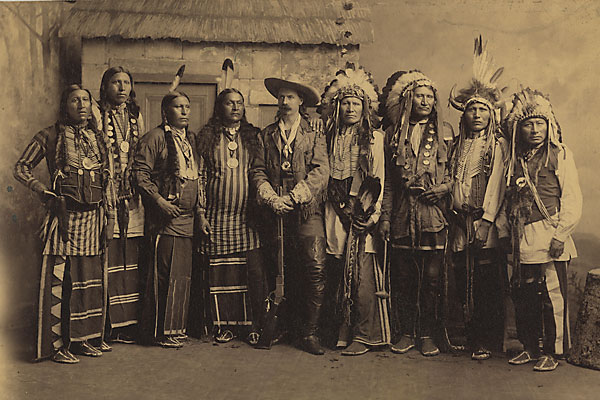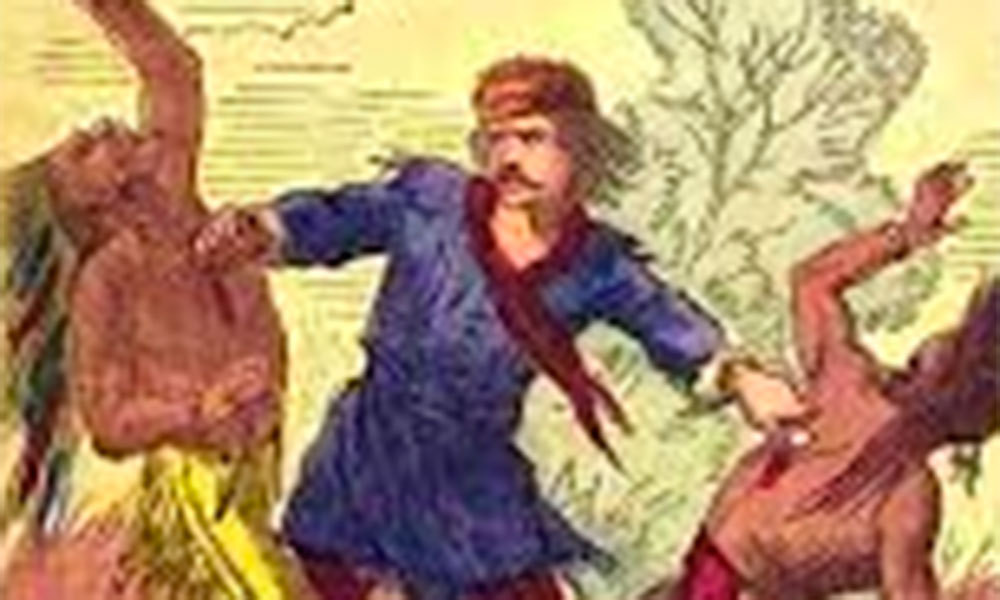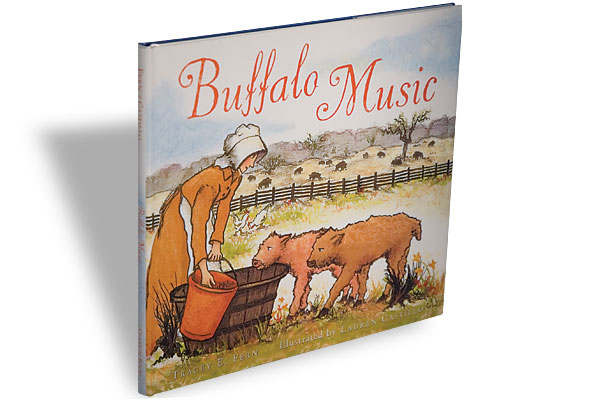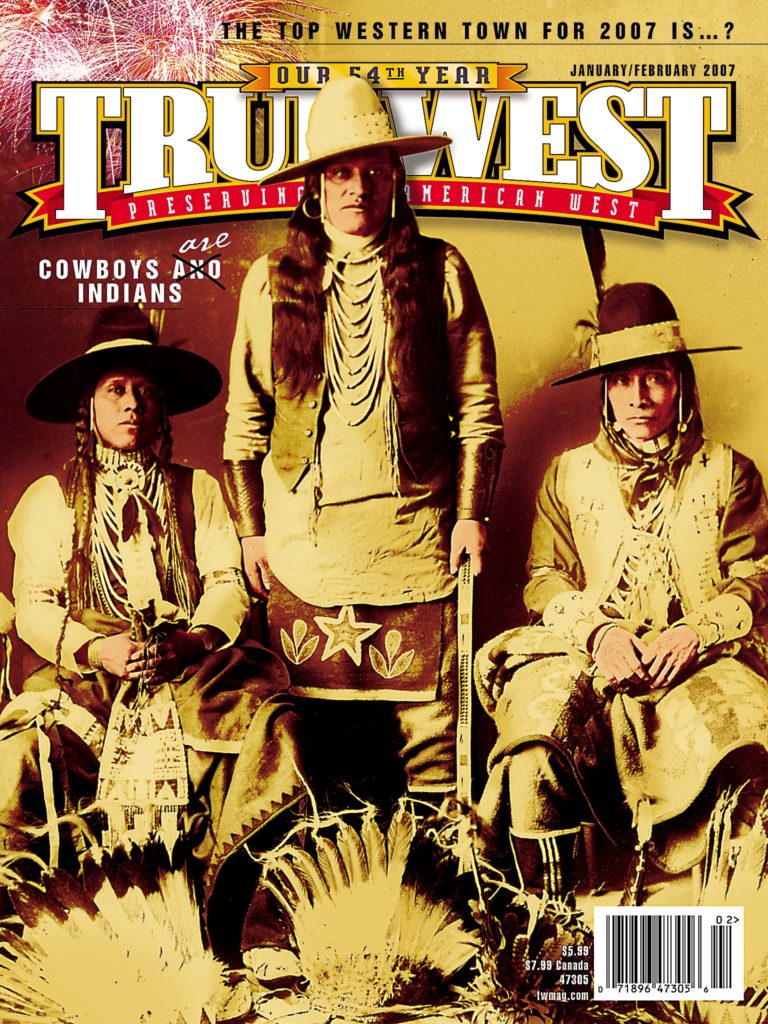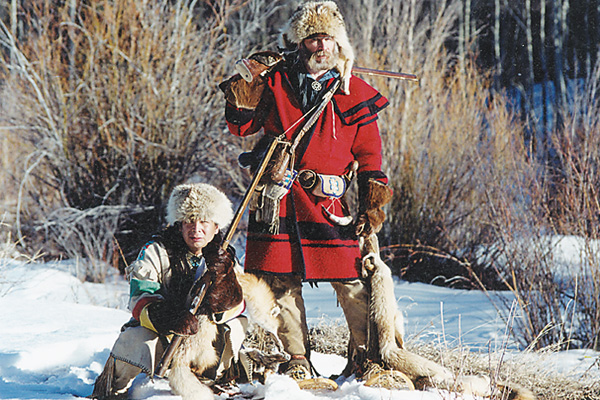 Lying atop a grassy knoll 400 yards downwind from a grazing herd, a bearded, unkempt hunter rests the barrel of his .50–caliber Sharps on a metal monopod, cocks the hammer and sights in on the lead cow. Aiming at her chest, a hand-width above the elbow-joint of her foreleg, the frontiersman slowly squeezes the trigger. A puff of dust explodes from the buffalo’s shaggy coat when the 500-grain bullet strikes.
Lying atop a grassy knoll 400 yards downwind from a grazing herd, a bearded, unkempt hunter rests the barrel of his .50–caliber Sharps on a metal monopod, cocks the hammer and sights in on the lead cow. Aiming at her chest, a hand-width above the elbow-joint of her foreleg, the frontiersman slowly squeezes the trigger. A puff of dust explodes from the buffalo’s shaggy coat when the 500-grain bullet strikes.
Hit in the lungs, the cow remains stationary while her lifeblood flows from the wound. After a few moments, she sinks to her knees, her tongue a-loll. Not realizing that one of their number has been mortally wounded, the other members of her herd continue grazing, oblivious to the distant bang that fires repeated bullets into their midst. Within minutes the keen-eyed hunter kills every animal in the stand.
Hollywood and writers who learned their history from the movies have painted the foregoing scene so often, it has imprinted an indelible image of the 19th-century buffalo hunt on the American psyche. Like some of what Tinseltown puts on the silver screen, the scene contains nuggets of truth. Buffalo hunters occasionally did shoot every animal in a small herd. But the buffalo were not unmindful of the carnage.
According to Dan Deuter, curator of the Fort Uncompahgre trading post replica in Delta, Colorado, western artist, modern-day mountain man and raconteur of living history, buffalo will not tolerate a wounded animal in their midst. As soon as the first buffalo in a herd is shot, the smell of blood will send the rest of the herd into a frenzy. Circling and hooking, the healthy buffalo will attack the fallen member with their horns, attempting to make it rise. If the hunter shoots more animals, increasing the flow of blood, the frenzy will escalate, drawing in outlying members of the herd.
Generally, bulls are more aggressive and remain closest to the kills, whereas cows rampage farther afield. During the frenzy, the buffalo will point their tails skyward, signaling their agitation. Anyone—whether man or beast—venturing too close to the herd risks being trampled or gored.
Because of a buffalo’s inbred urge to attack its wounded brethren and the excitement brought on by the odor of blood, healthy animals often remained in range of the hide hunter’s rifle and could be picked off one after another until the herd was obliterated.
The shots would not alarm the herd because the discharge of a blackpowder Sharps rifle resembled thunder, a familiar sound to buffalo living on the plains. In contrast, the shot from a modern rifle using smokeless powder produces a loud crack, which is more apt to scatter a herd.
For the buffalo hunter of the 1870s and early ’80s, shot placement was im-portant if he hoped to have more than one kill. When a buffalo is shot in the heart, it will often run—sometimes a half mile or more—before dying. Seeing one of its members take flight, the rest of the herd would likely dash after it, leaving the hunter with no more targets. In contrast, a lung-shot buffalo will typically stand its ground until the loss of blood causes it to fall.
Dan Deuter has observed this behavior many times. Although buffalo no longer number in the tens of millions as they did in the 1700s, they are not an endangered species. Today, over 100,000 bison are scattered throughout our national parks and preserves or maintained in privately owned herds. Some custodians of private herds allow limited hunting.
When Dan guides buffalo hunts, he encourages his clients to use blackpowder breech-loaders or muzzleloaders and iron sights. If a client can ride, Dan occasionally will allow him to hunt from horseback, following the tradition of mountain men such as Jim Bridger and Tom Fitzpatrick. Oftentimes Dan and his clients will dress like the old trappers, as well.
During a recent buffalo hunt in western Colorado, Dan partook in another ritual of the old mountain men. While butchering the meat from a 1,700-pound bull that his client had shot, Dan removed the warm liver and as it steamed in the cool winter air, he and his client ate it raw.
When asked if he had ever drunk the contents of a buffalo’s stomach, which the old trappers did when they had no water, Dan replied, “No, I’ve never been that thirsty.”
R. G. Robertson has never shot a buffalo, but he often shoots the bull.


